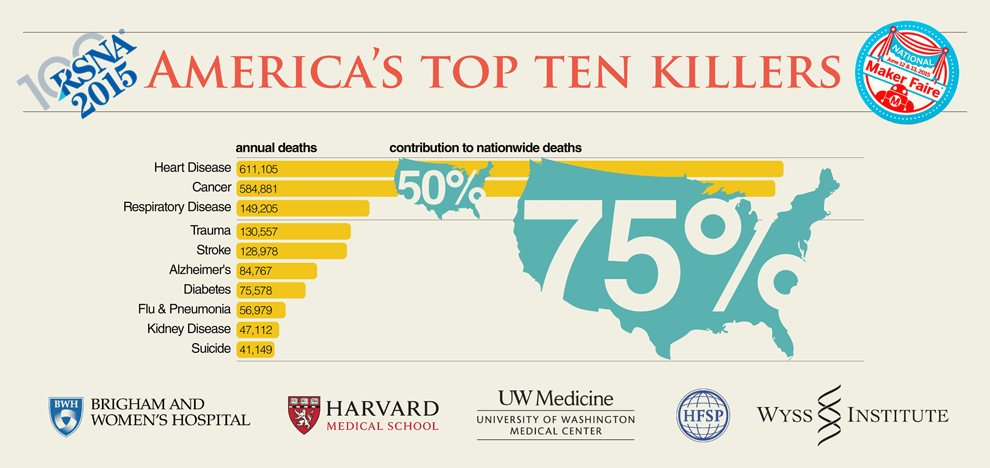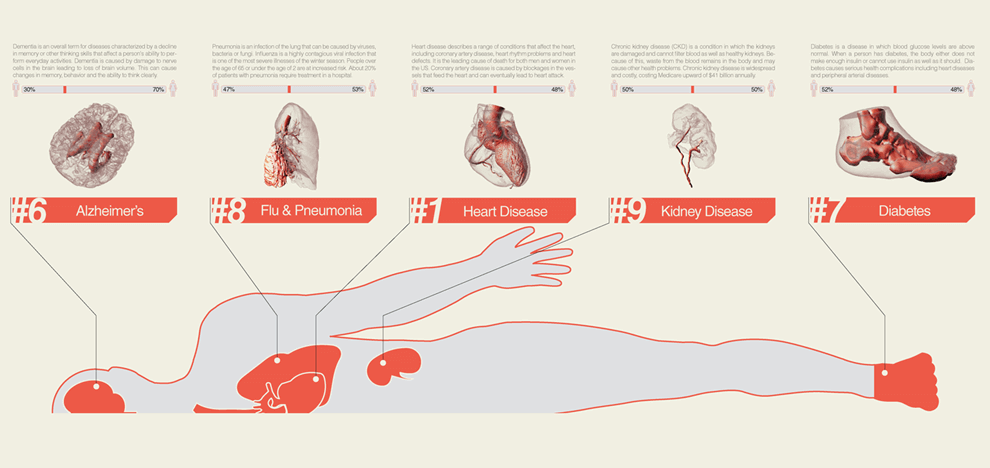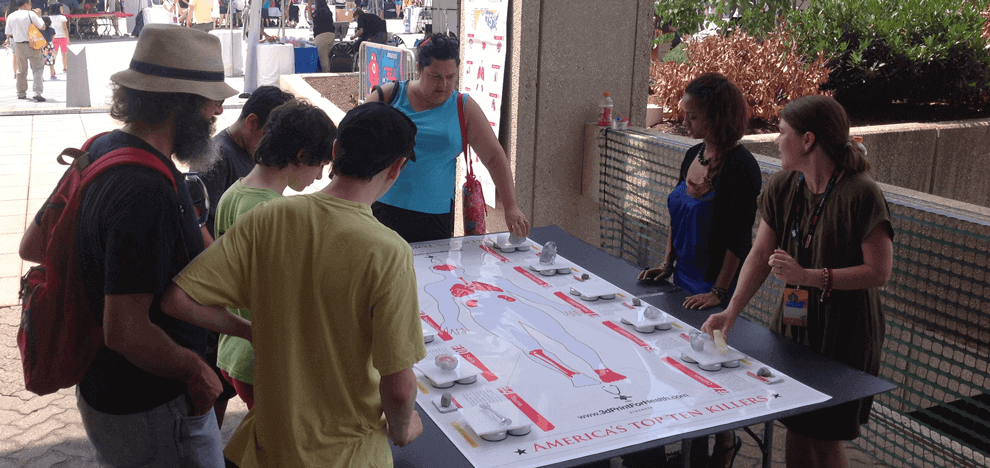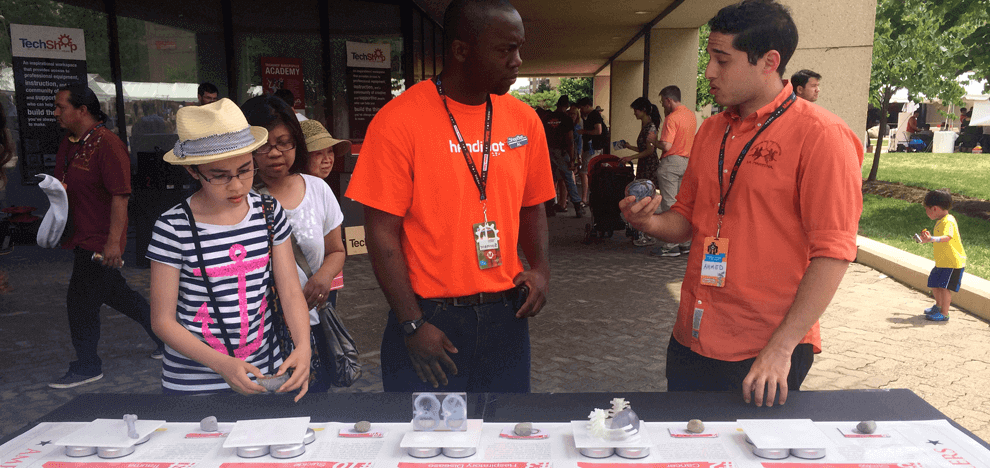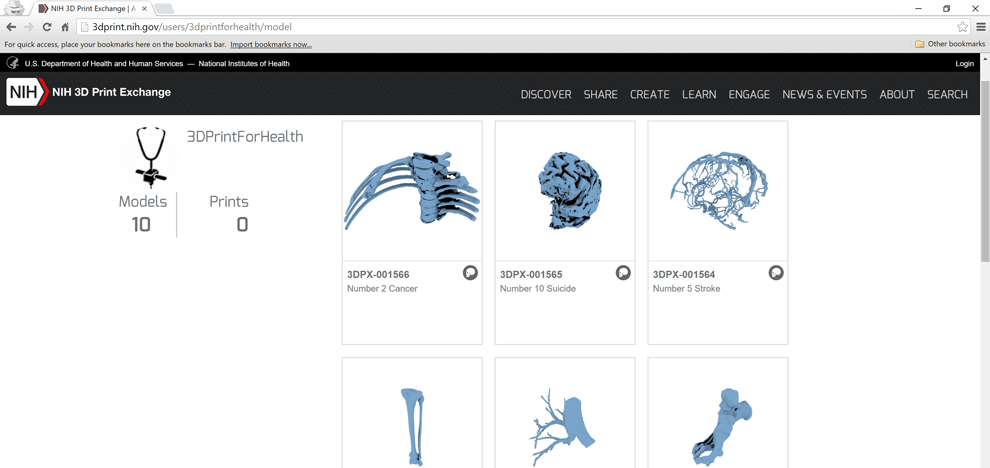3D Printing in Healthcare
3D Printing: a tool for precision and personalized medicine as featured at the 2015 National Maker Faire in Washington DC, the 2015 World Maker Faire in New York and RSNA 2015. Access the 3d print for health plaform here. 3D printed models allow patients who typically don’t have years of medical training to gain deeper understanding of the planned procedure and alternatives before deciding to proceed with a treatment. 3D models are also superb educational tools for teaching anatomy, pathology and surgical techniques to trainees. Bioprinting, which involves printing of live cells and viable tissues that can potentially be implanted into human beings, is currently an active field of research. 'Top 10 Killers' was our team's first project. We wanted to find a way to introduce medical 3D printing to the general population and demonstrate how it can help a large group of people. We want to move 3D printing into mainstream medicine. To encourage this, we created 3D models presresenting the 10 top deadliest diseases in the United States. 3D printing is a disruptive technology which is poised to revolutionize the health care industry and impact patient care for the better. Patients, healthcare providers, engineers, chemists, artists, entrepreneurs, teachers, students and creative thinkers are invited to advance this technology as we move to the era of personalized medicine. 3D printing is mainly used for very rare medical cases. This means that the majority of patients are not benefiting from this technology. We hope to inspire collaboration among health care providers, engineers and patients to identify how this technology can best benefit patients. Some of the potential benefits of 3d printing in medicine: better preoperative surgical planning, avert unnecessary surgery in patients with potentially unsuitable anatomy, decrease complications of liver transplant surgery, facilitate the evaluation of preoperative risk and critical anatomical structures, reduced mean operation time, reduced intraoperative blood loss, reduced postoperative hospital stay. All 10 models are available to download from the NIH Print Exchange website. If you are an educator, patient or health care provider, consider printing a few cases to spread the word. Access the models here.
